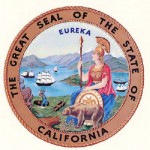While the Forest Service’s Keenwild Station recorded only 0.2 inches of rainfall Thursday and Friday, other southern California areas (such as Dana Point, Oceanside, and Murrieta) received nearly an inch or more of rain. Many believe or are hopeful this storm is a harbinger for fall and winter weather.
For several months, the National Weather Service has forecast a weak to moderate El Niño weather pattern forming this fall. But that forecast maybe wishful thinking based on the Service’s October announcement.
As late as July, National Weather Service models were predicting an El Niño might develop as early as September. However, the latest forecast indicates the trend toward an El Niño pattern is much less likely.
“The atmosphere and ocean indicate borderline neutral or weak El Niño conditions,” was how the National Weather Service phrased the latest forecast. “Compared to the past few months, the chance is reduced for El Niño to develop during the Northern Hemisphere fall and winter 2012-13.”
Nevertheless the Weather Channel announced that it would begin naming winter storms as the National Weather Service names hurricanes.
“The fact is, a storm with a name is easier to follow, which will mean fewer surprises and more preparation,” wrote Tom Nizoi of the Weather Channel on Oct. 3.
Storms with names are easier to follow, to remember and to raise attention, he said.
The naming of storms actually originated in the 19th century, but the weather service began naming tropical storms (i.e., hurricanes) with women’s names in the 1950s. In 1978, it also began using men’s names for storms.
The Weather Channel has considered the difference between tropical and winter storm formation and the effect on the naming process. According to Nizoil, “Naming of winter storms will be limited to no more than three days before impact to ensure there is moderate to strong confidence the system will produce significant effects on a populated area. …
“The process for naming a winter storm will reflect a more complete assessment of several variables that combine to produce disruptive impacts including snowfall, ice, wind and temperature,” he wrote. “In addition, the time of day (rush hour vs. overnight) and the day of the week (weekday school and work travel vs. weekends) will be taken into consideration in the process the meteorological team will use to name storms.”
The first few names will be Athena, Burus, Caesar, Draco, Euclid and Freyr.











xmjstoy5hvg, raspberry ketone plus reviews raspberry ketone pure loans for bad credit no fax same day debit card loans instant payday instant loans new pay day loan companies.